One of the toughest times to catch speckled trout and redfish is during the sweltering heat of the dog days of summer!
This is a challenge I've successfully met more than once, and I have some great tips and advice from those experiences that I'd love to share with you here. Use them on your next fishing trip and you'll have a good time, too!
We'll get started by identifying exactly what the dog days of summer are, when they happen, and how these conditions affect speckled trout, redfish and — ultimately — your fishing trip.
What are the "dog days" of summer for speckled trout and redfish?
According to the Farmer's Almanac, the dog days of summer are from July 3rd to August 11th each year. But I'll tell you that — as it applies to inshore fishing in Louisiana — the "dog days" are just sometime in the last half of summer when it's really hot. The hotter the day, the doggier it is...if that makes sense.
And what makes this extreme heat such a challenge for inshore fishing are two factors:
The first one is pretty obvious: it gets hot! You slow down, you get burnt, you sweat a bunch and it can be downright miserable.
The more sun the shines and the less the wind blows, the worse it is. It's like being in a bright sauna and you can't get out!
Well, that simmering sauna has a similar effect on speckled trout and redfish:
Believe it or not, the fish don't feel much different. They are cold blooded and their body temperature — which more or less reflects the ambient water temperature — is operating on the extreme end, especially if the water temp is in the high 80s or low 90s.
When that happens, they feed in shorter windows. Yes, they still have to eat, but they will do so when the time is right.
If you're not sure, just consider when it is you get yard work done: not at high noon under a bright shining sun.
You don't want to be pushing a mower in the blazing dog-days heat and speckled trout don't want to be chasing bait in that crap, either.
But speckled trout and redfish are two different animals and you can change when you fish for either as an adaptation to a solid "dog days" summer fishing strategy.
Keep reading and you'll see how well they complement each other on your future fishing trips.
Your Winning Strategy for Dog Days Speckled Trout
Speckled trout are efficient predators and creatures of habit. They are going to get what they need to eat then bide the rest of the day resting. They are not going to work any harder than what they have to, much like you or me.
Considering this, it shouldn't be surprising to learn that speckled trout aren't going to be feeding during the hottest part of the day. So when should you be on the water?
That's a good question, and the below rule is my best answer:
The 5am Rule
The key to success with dog days speckled trout is to fish for them early.
The earlier the better. It's not uncommon to hear of guides getting to their first fishing spot for 4am and having their limit for a little after 6am.
Yes, I know: leaving the dock before 4am is an extreme example, but it very well illustrates the idea of fishing early.
But you don't have to leave that early! Generally, when I am fishing the summer pattern, I am leaving the dock for no later than 5am. This gives me plenty of before morning night twilight to see where I am going and get to the first fishing spot safely.
If you're not sure, then wait for first light and take it slow. You'll become better with experience.
Now, something to keep in mind about the above rule is that it gets light earlier the closer you are to the summer solstice, which is June 21st.
So the sun will be up earlier on July 3rd (6:04am) than it would be on August 11th (6:25am).
But where should you be fishing for dog days speckled trout? Let's look at that next:
Where To Fish For Dog Days Speckled Trout
There's a lot I can detail about the behavior of summer time specks, but one thing that stands out from fishing early is where you should be fishing.
Speckled trout are spawning during summer, and they tend to spawn in bodies of water with a salinity at least 15 to 17 parts per thousand, sometimes higher.
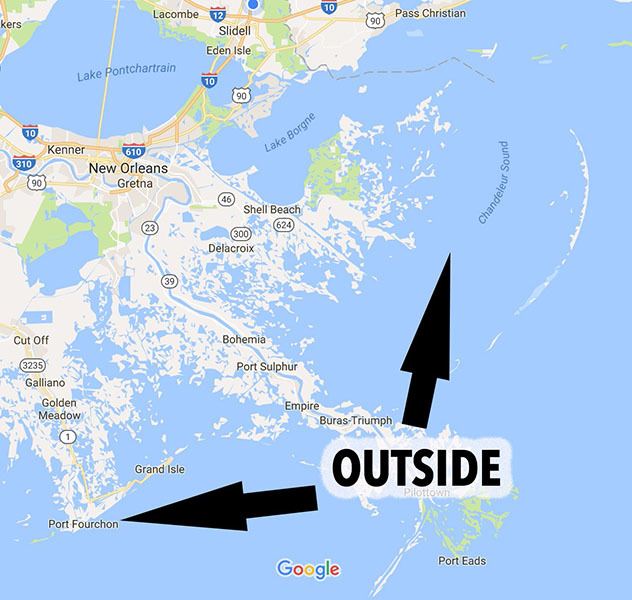
The "outside" is where you find better speckled trout fishing during the dog days of summer.
Fishing spots meeting this criteria are on the "outside" of Louisiana's marsh, closer to the Gulf of Mexico. Out here in the saltier water you are looking for fishing spots that include, but are not limited to:
I love fishing over oysters, and this guide to fishing oyster reefs will get you pointed in the right direction! Another favorite are natural gas and oil platforms, or just "oil rigs". These can be a ride to get to, but the ones in water that's twelve feet deep or more can be really good to fish!
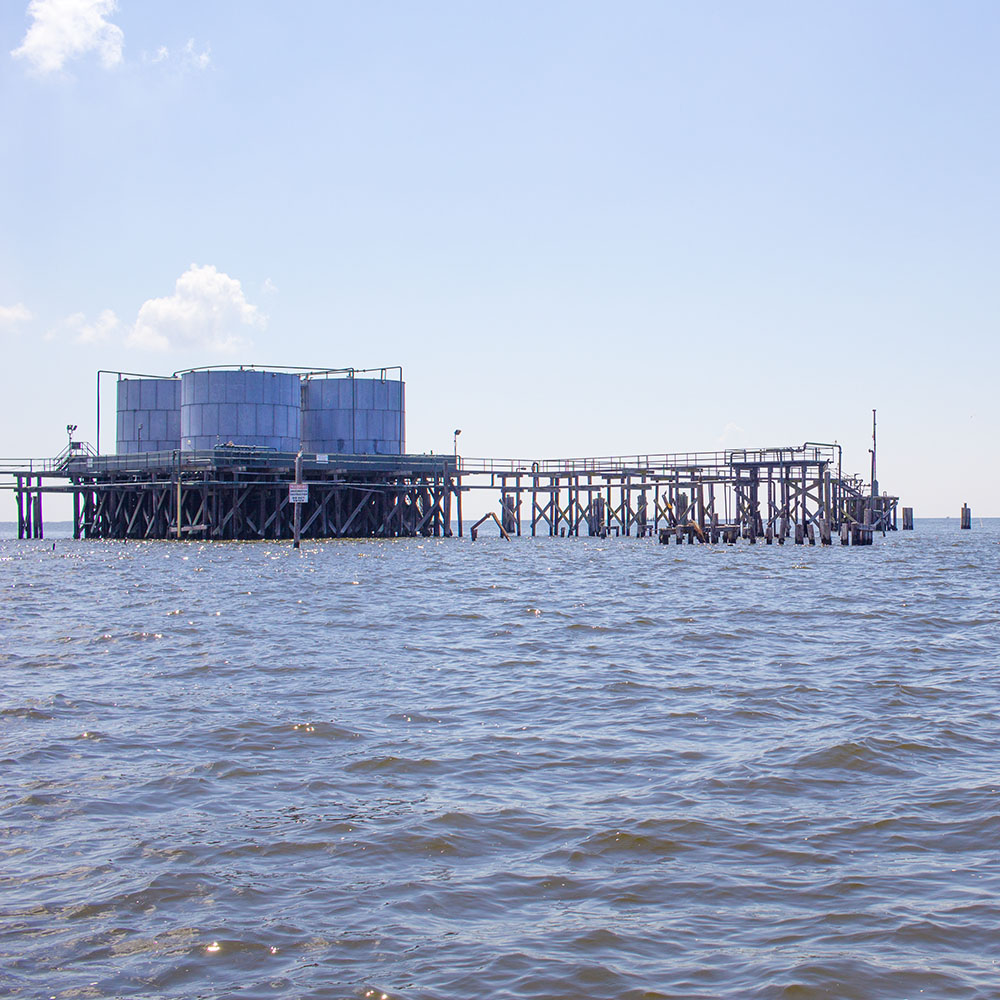
It's always a good idea to fish all four corners of a rig until you find where the speckled trout are holding. Over time, as you fish it, you will find the "sweet spot" that they tend to hold to.
Something else to consider is that many of these fishing spots are in wide, open water. You really need to make a good wind call or risk getting beat up in rough water....or something worse.
This guide to using Windfinder details my favorite tool to guesstimate the wind forecast.
But what if I don't have a boat to reach these fishing spots?
No boat? No problem!
A really cool destination you should consider is Grand Isle and neighboring Elmer's Island. Both locations are places you can go wade fishing.
On Elmer's Isle there's a taxi service to take you up and down the beach and in Grand Isle there's a public pier that's accessible for night fishing. Just be sure to try out these lures when fishing at night.
If you do get in the water, then be sure you know about this flesh-eating disease and how to combat it.
Additional Tips For "Dog Days" Summer Speckled Trout
Bigger trout tend to bite earlier in the morning and, as time progresses, the bigger trout gave way to smaller trout. Smaller speckled trout do this because they must eat as much as they can in order to become larger.
Consider this logic: the bigger they are, the fewer things that can eat them. Then, as they grow, they become more experienced and feed in shorter windows.
The "Hours of Power" for Dog Days Speckled Trout
Given all of this information, the "hours of power" for a good speck bite run from before sunrise to about 9am, maybe 11am.
The trout bite is generally over once noon hits and the water becomes hot.
The biggest mistake inshore anglers make is thinking the fish will wait for them. They sleep in, take forever to get into the water and move slow as molasses.
By the time they're learning how awful the dog-days heat can be, the rest of us are back at the dock cleaning fish.
There have been times I was able to bail out fishing trips by focusing on smaller trout and working through the throwbacks. Sometimes this is an effort in futility and it's better to switch to Plan Redfish.
Also, because it's now en vogue to do so, some people reading this will criticize my notion of catch and release, claiming that it kills all fish. My response to such an ignoramus: no it does not.
The Glaring Exception To Summer Heat & Dog Days Fishing
As much as this guide harps on the weather being hot during the tail end of summer, it can actually be very cool during hard overcast days. I have that such weather — even if its a little stormy — will keep water temps down, allowing speckled trout to bite throughout the day.
For more details on why this works and how to look out for it, please check out this guide to overcast specks here.
Summer Dog Days Strategy for Redfish
Redfish can be such a great alternative to speckled trout during the hottest days of the year, and for two reasons:
The slot redfish we traditionally enjoyed — once 16 to 27 inches, and now 18 to 27 inches — are not sexually mature. They have no need or desire to spawn so, just like juvenile trout, they remain in the marsh in less salty water.
In fact, in some places they can be had in ponds filled with aquatic grass that gives them shade from the sun and filters the water. If you've never seen it, then know that sight fishing reds in Louisiana's "pumpkin patch" can be more than an alternative to fishing speckled trout, it can be the experience of a lifetime!
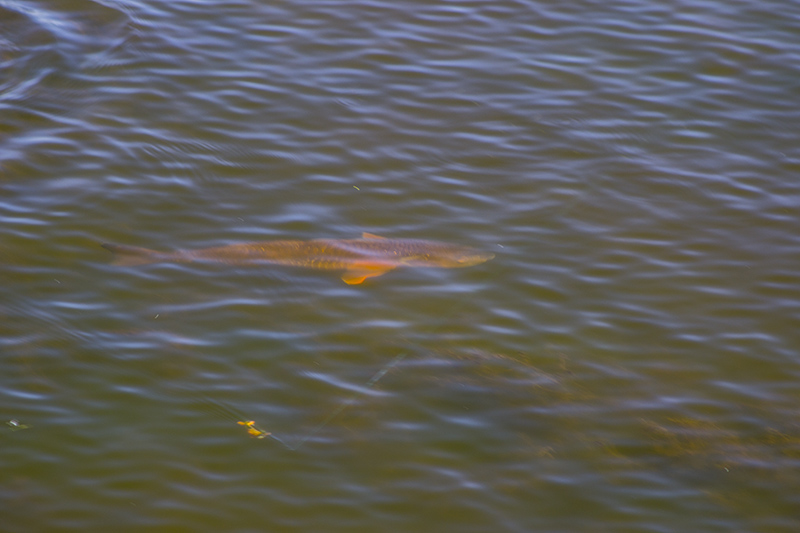
You can see a redfish in the "pumpkin patch" as well as you can see a stop sign.
We all know redfish are typically found along the shoreline, or some kind of cover, patrolling for bait to eat.
If the pond has aquatic grass you can expect them to come off the shoreline and patrol the grass. However, with the addition of summer heat, you can will see redfish take cover in the middle of the pond, where the water is deepest, in an effort to cool off. The deeper water in the middle of the pond can be a degree or two cooler.
A couple degrees isn't a big difference for me or you, but for a redfish it is everything.
Don't be surprised to see redfish hiding inside mats of aquatic grass. It's a great place for them to find shade and fresh, oxygenated water.
What time should you go fishing for dog days redfish?
Well, you can leave at the same time as you do for speckled trout: ridiculously early. But unless you had some crazy reason to do so, I'd say that you're just fine to get on the water for 7am. That's a whole two hours later than you would for dog days speckled trout!
The reason why is because redfish are tougher (as mentioned earlier) and last longer through the day. The next reason is because you really ought to consider sight fishing for them!
In order to successfully sight fish you need the sun to be up and out! So no early boat launches.
Sight fishing really is a treat and you'd be a fool to not give it a try. That's because it takes your inshore fishing education to the next level, as you literally watch bait and fish swimming around you like you're at the aquarium! There's no more guessing what's there, you can see it with your eyes!
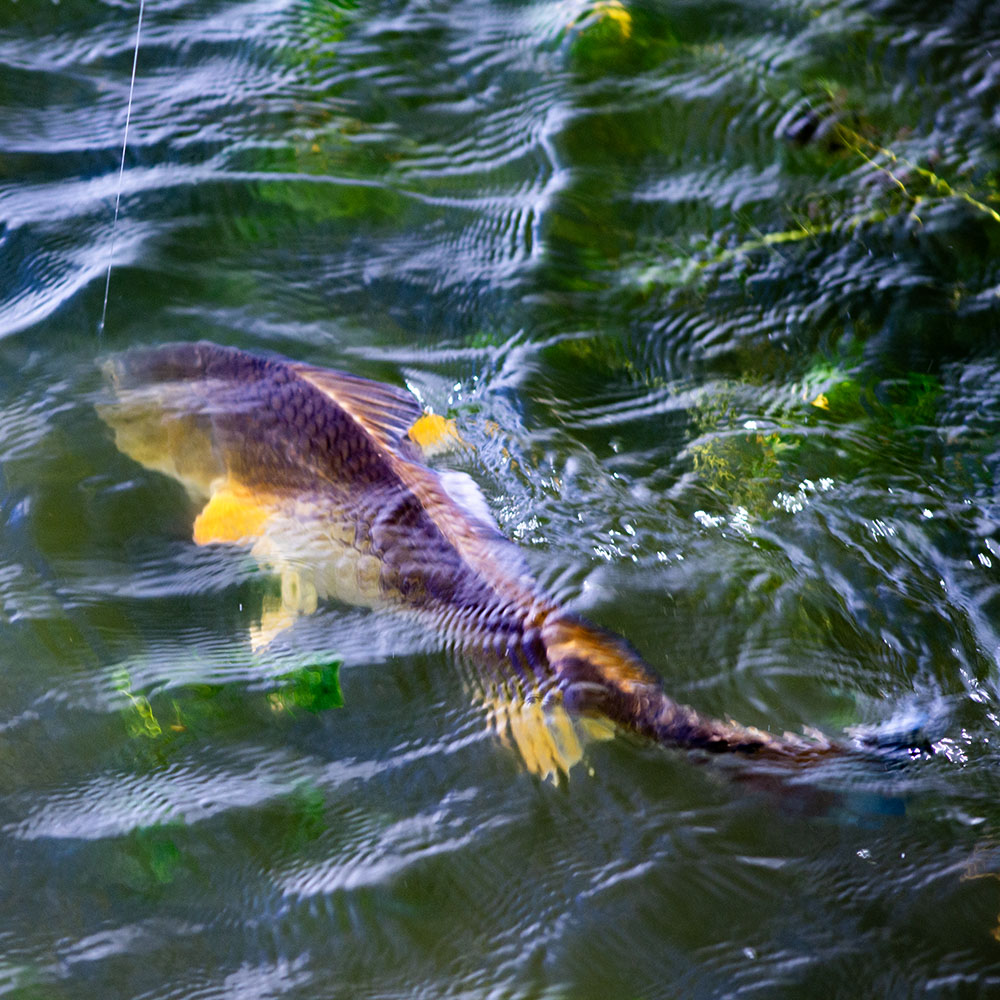
This experience will give you an edge over your former self and will be another awesome adventure in your inshore fishing journey. Trust me.
But even if you wanted to fish 'em the same ol' fashioned way via blind casting, then know that's fine, too. You still don't have to get up as early!
I would say that the "hours of power" for dog days redfish are something like nine in the morning until noon, though it is possible to catch them later than that.
Don't Forget The Mighty Mississippi!
The Mississippi River floods during spring, but by the dog days of summer she ought to be in the single digits.
When she gets that low, the surrounding marsh and even the river itself cleans up. In fact, when she's below 5 feet at the Carrollton Gauge, you can count on the river being the cleanest, greenest water on coastal Louisiana.
But let me throw a curveball at you: the river will also be the coolest.
Why is the Mississippi River cooler than the surrounding marsh, bays and sounds?
That's an excellent question, and my excellent answer is: "Because that water is traveling from up north where it's cooler" and "because that water is deeper and therefore more difficult for the sun to heat up".
Don't believe me? Just look at these water temperature readouts for the month of July 2023 from Shell Beach, Grand Isle and Pilottown (which is located on the Mississippi River).
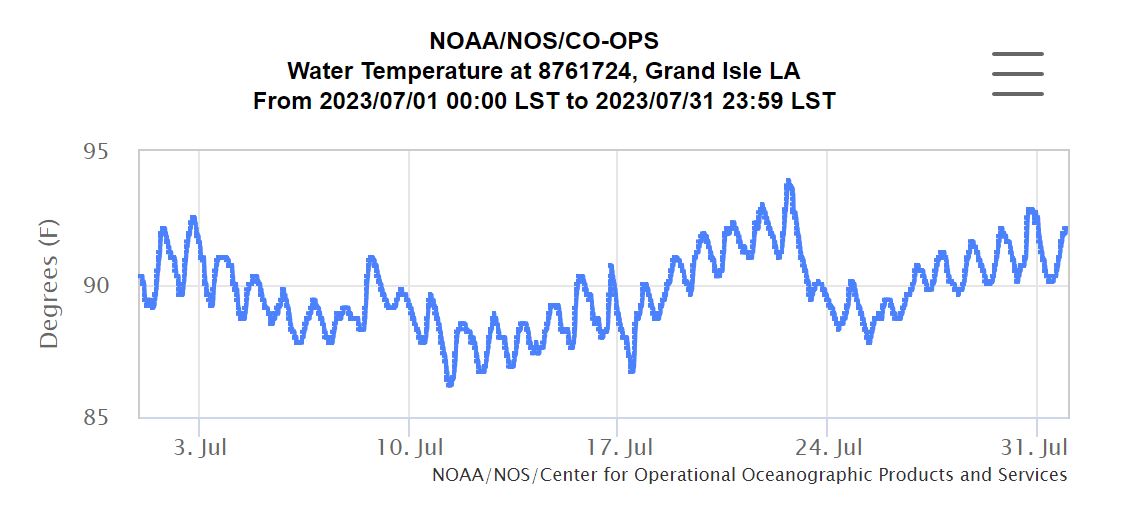
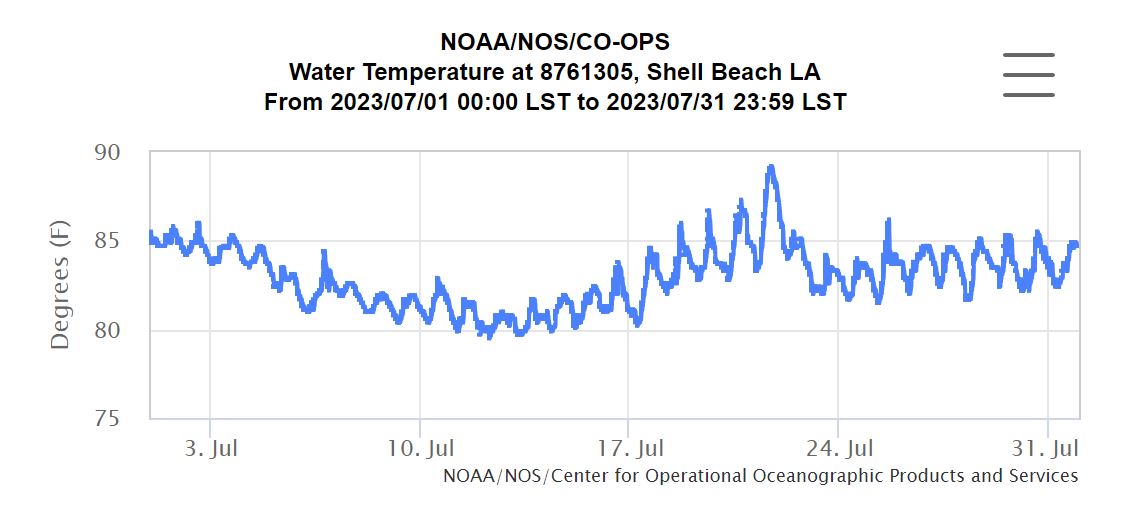
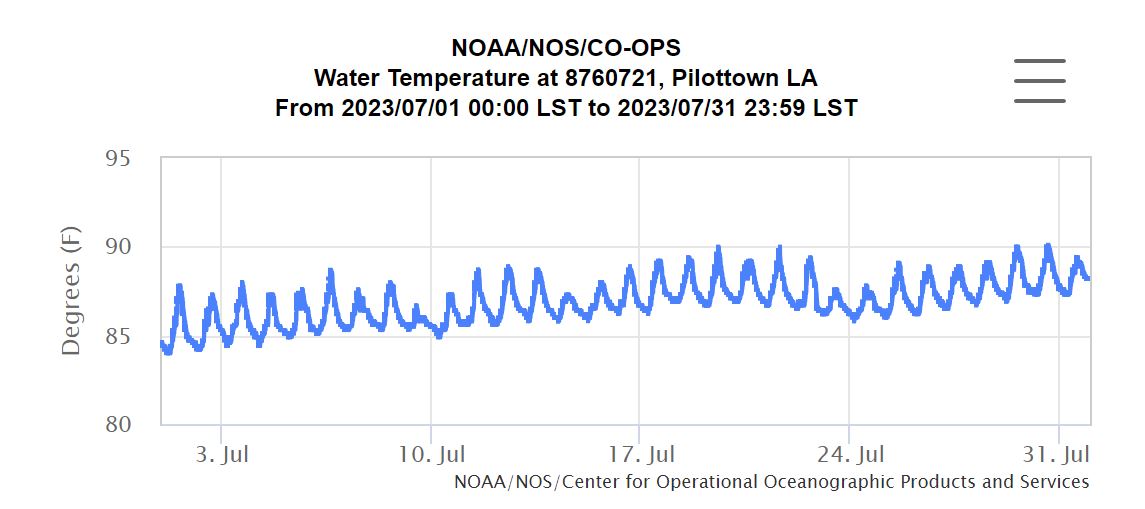
In case you didn't see, the top picture is Grand Isle, the middle Shell Beach, and the bottom, Pilottown.
Grand Isle and Shell Beach get warmest, especially the former with a peak as high as 92 degrees! But Pilottown? A little cooler and, just as important, far more consistent.
Look again: Grand Isle's graph looks like a roller coaster ride and Pilottown's graph looks nice and steady. This also highlights that deeper water is more consistent in temperature, and just another reason why fish like deep holes.
So when the river falls, you'll want to fish in and around it for redfish, and get closer to it for speckled trout. Remember that speckled trout still need that salinity! This guide will give you an idea as what to look for and when.
Additional Tips For Dog Days Redfish
While writing, I thought of some additional tips for summer time redfish, so I wanted to include them here:
Some redfish ponds are too shallow and become too hot for them to bear. If you pull into a pond that is packed with gar and mullet, then chances are there are only gar and mullet.
Those fish are capable of breathing air to supplement their oxygen needs. Redfish can't do that.
Besides, if a pond is so thick with trash fish then why would you want to fish it? When you inevitably spook the mass of mullet or a huge gar, they will, in turn, spook the redfish.
Moving Water = Cooler Water
Moving water is everything. Generally, moving water will be cooler than slack water.
This is why I still look to fish bodies of water with bigger tidelines that are more "highways" than "sidewalks". This applies to speckled trout just as much as it does redfish!
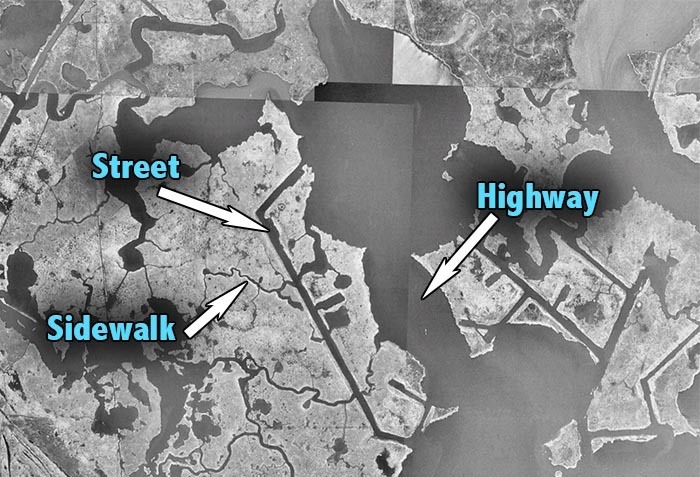
What about alternatives to fishing for specks or reds, or during the day time?
Something I get a lot is, "What else is there to do during the summer?"
Well, that's a great question, because you don't have to get out there and sweat your butt off or relegate yourself to only fishing the two aforementioned species.
Avoid The Heat Altogether: Consider Night Fishing
Especially when it's super hot, you really ought to consider foregoing fishing during the day and just going at night. This applies to speckled trout and redfish.
It'll be a lot cooler and chances are the fish will be taking advantage of it as well. If there's a dock light you always wanted to try, or you're enterprising with a generator and underwater light, then consider going night fishing.
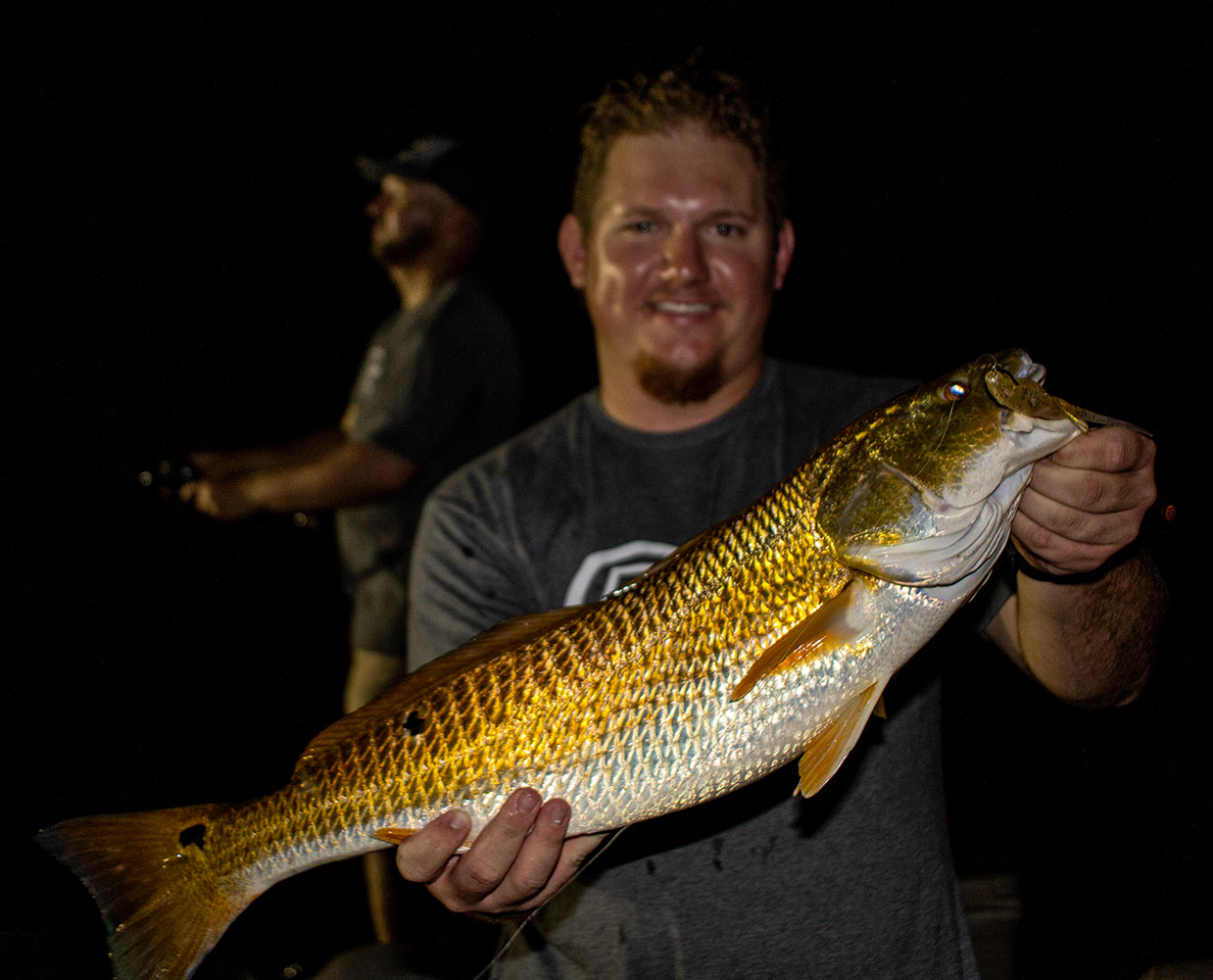
Night fishing for speckled trout or redfish during the dog days of summer can be very productive!
Forget Specks & Reds: Consider Those Floaty Fish!
Another great option during the summer are triple tail. You'll spend a lot of time running the boat looking for these fish, which helps to keep that "cajun air conditioning" rolling.
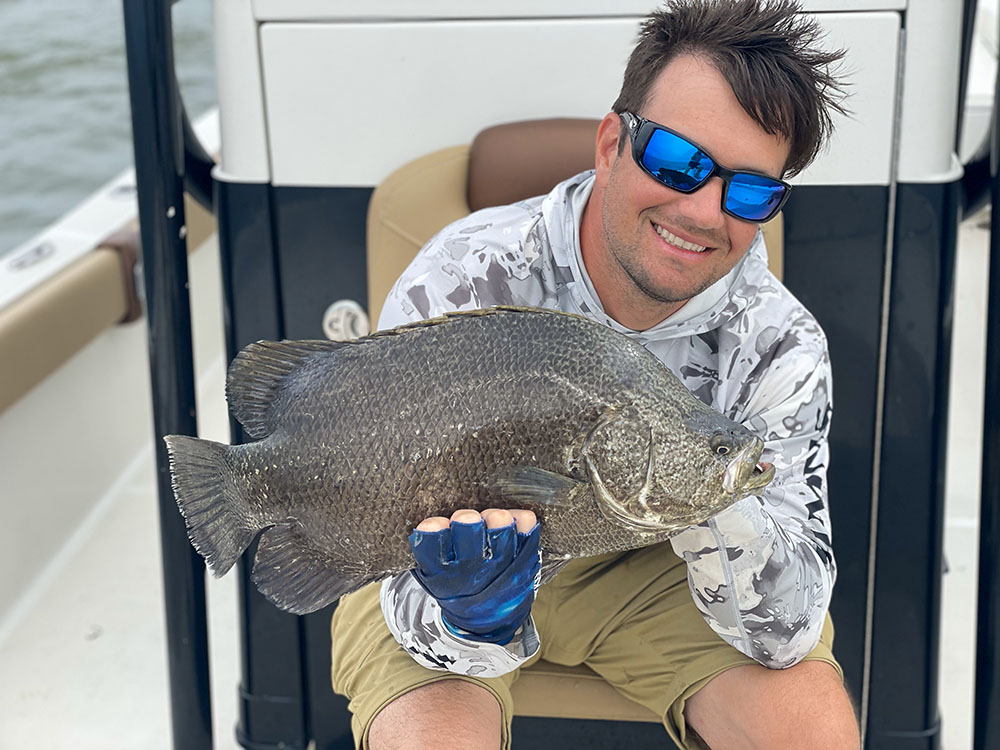
While there's a lot to talk about here, I already have a guide for summer time triple tail that will get you pointed in the right direction.
Learn Everything You Need To Know About Catching Speckled Trout & Redfish Year Round
In this guide you learned what you need to do in order to catch speckled trout and redfish during the dog days of summer, but what about picking out fishing spots based upon the conditions?
What about ensuring you are navigating your boat down a safe path? How do you know where navigational hazards are?
Which tackle is the best to use for each scenario? What if your fishing spots don't produce?
This and more is what I can teach you inside Inshore Fishing 101 and its companion course, Summer Fish Location. Both courses are only available inside LAFB Elite, and there are no other courses on the Internet like them.
Upon joining, you also gain access to the LAFB Elite Community, where you can discuss your next fishing trip with like-minded anglers. Some of them were so kind as to leave a testimonial below:
THANKS from a rookie inshore fisherman!!!
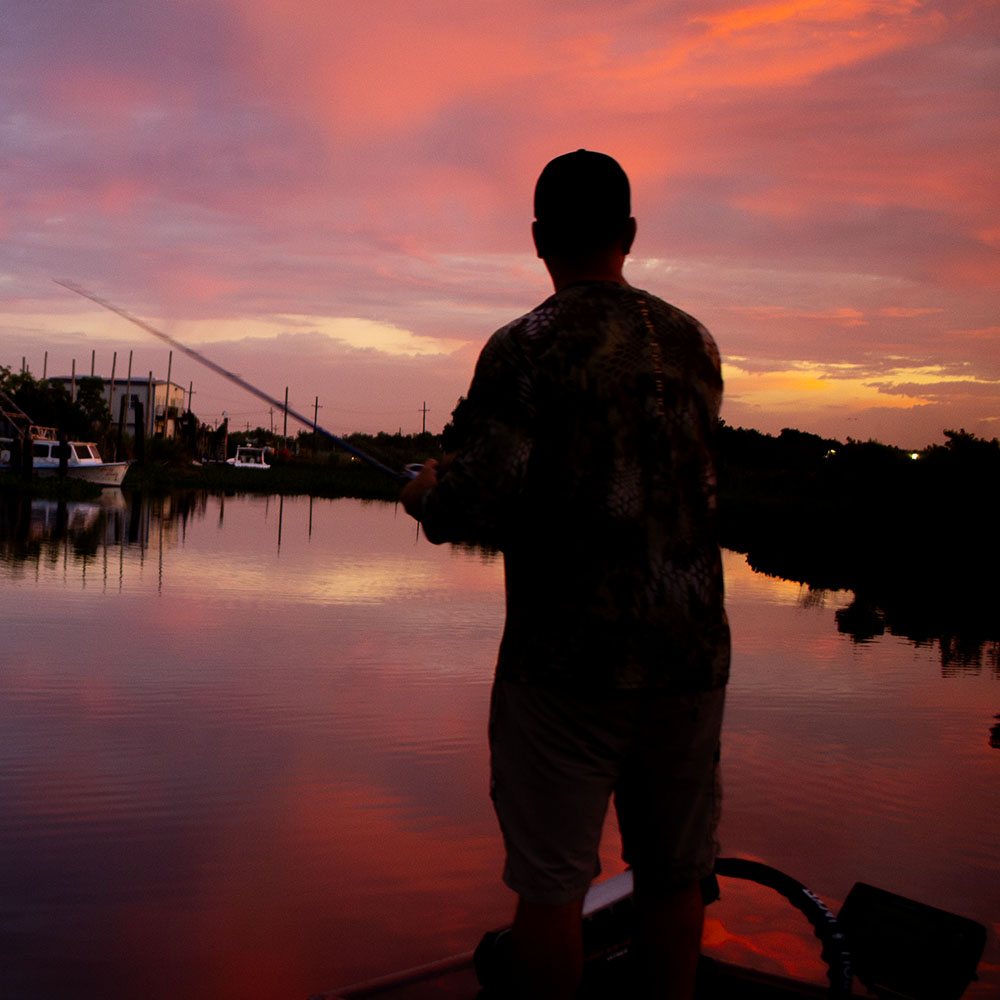
I really appreciate Devin's teaching & how he is "to the point" and down to earth, yet professional and gives a great presentation of what I need to know in order to catch speckled trout and redfish.
Before taking Inshore Fishing 101 I have not had very many successful trips to Louisiana, but with these great learning experiences, since completing 101, I have had more success. Finding the best conditions, using the right tackle, Google Earth Desktop & technical stuff on my Lowrance, etc., the list is too long for this, so THANKS from a rookie inshore fisherman!!!
Captain Devin has done an excellent job with these classes! As a speaker, preacher, college teacher, & singer I appreciate the research, experience, time, & knowledge he put into the great presentations of each class. I can not suggest any changes for such an excellent course!
Best Investment I've Made
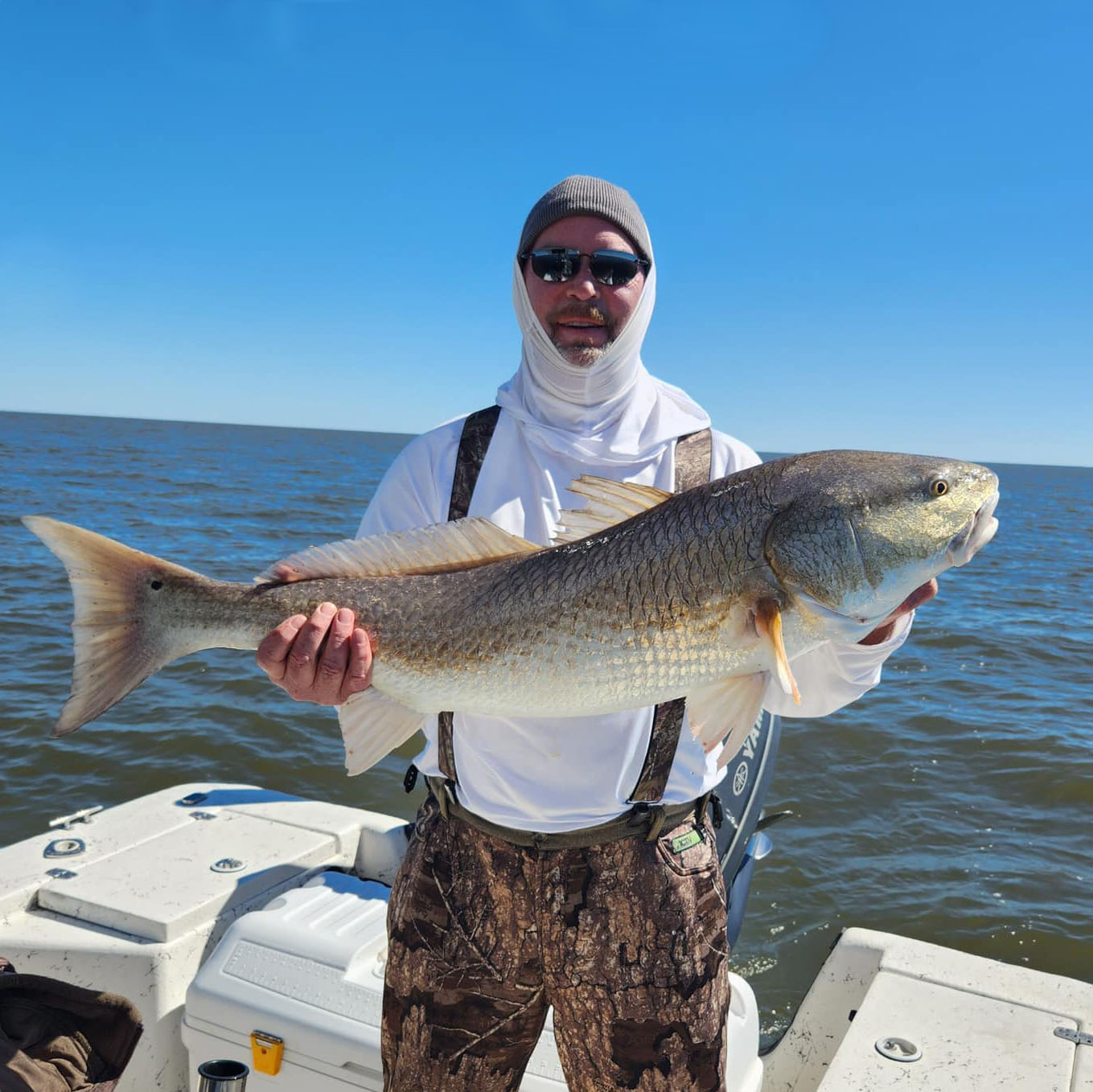
Yep, Inshore Fishing 101 is the best investment I’ve ever made in catching fish. (Keyword CATCHING)
I was an early member. I think if for some reason I lost my membership that I would buy another one!
I have been unsuccessful at finding anything like Inshore Fishing 101 anywhere else.
Thanks, Devin!
Mississippi Angler Learning Louisiana Waters
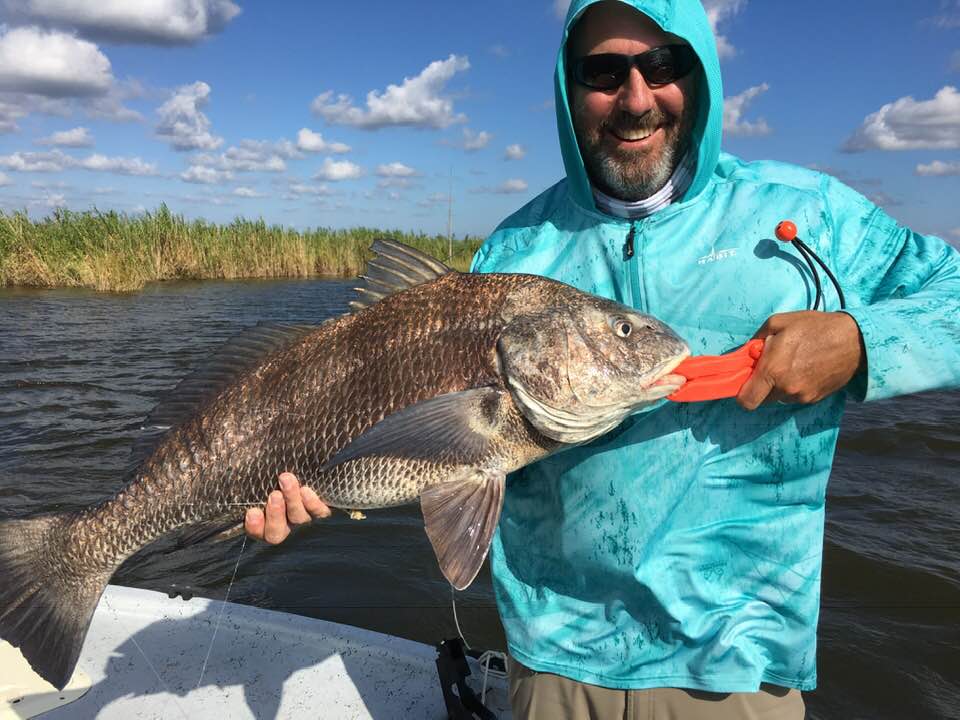
The courses inside LAFB Elite, especially Inshore Fishing 101, are very complete. There's a lot of information in them, so I recommend taking it slow and using what you learn out on the water.
Otherwise it will leave your brain exploding with knowledge. But it all does make more sense when you get out on water and see it happen before your eyes.
The difference is that with Devin's courses you'll know what to look for and what to expect. This makes fishing more productive.
What do you think?
This guide covered a lot of inshore fishing knowledge, but certainly not everything. Do you have some fishing tips for the dog days of summer that you'd like to share? If so, please comment below!
And, if you enjoyed this guide, then please be sure to share it on Facebook or X.
Tight lines, and thanks for visiting my website!

Thanks for reading!
Al, that’s absolutely correct!
Good timing on this “old” information!
Always enjoy your knowledge of fishing. After 70 years of fishing I have found one thing out for sure, Everyday is a learning day.
Hey Jason, thanks for commenting.
Honestly, you’re in the right place. There’s tons of information here on the Blog as well as inside LAFB Elite’s Courses: https://www.lafbelite.com/inshore-fishing-courses/
Tight lines!
NEED ADVICE! I’m heading down from Tyler Texas to Morans (port Fourchon)at the end of the month of August for a couple of days then to Boudreaux motel (Leeville)for a few days with my daughter. I haven’t fished them in years and my daughter just hit 10 yoa so she’s finally old enough to go. I have a 198 Carolina skiff. If weather permitting we will try close rigs out in the gulf, if not it’s bay and marsh fishing for us. Any advice of where to go, what bait etc is welcomed!! I want this to be a fun trip for her like I had as a kid. Thanks in advance! [email protected]